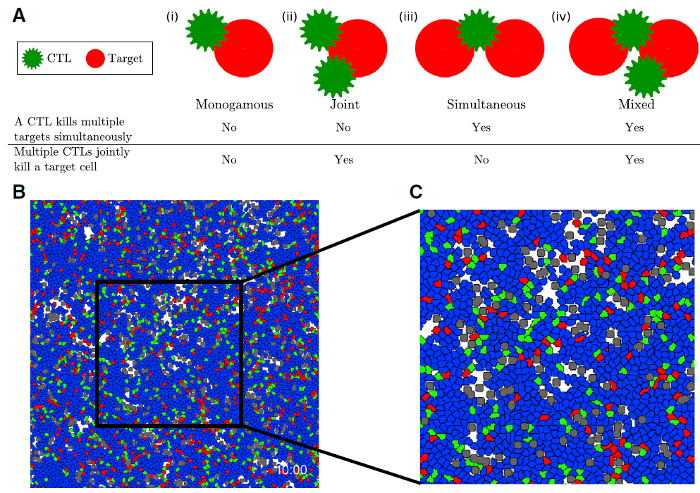Research project
Computational modeling of tumor growth and metastasis and the role of the immune system in tumor destruction
In this project, we aim to obtain a quantitative understanding of the role of the immune system in tumor regression, of the role of tumor cell heterogeneity in cancer growth and of tumor cell migration properties.
- Contact
- Joost Beltman
- Funding
- NWO VIDI grant
Therapies against human cancers are frequently successful in only a subgroup of patients. As an important example in which we are interested, immunotherapies have been developed involving drugs that stimulate the immune system in its attack of tumor cells or involving adoptive transfer of previously isolated and manipulated T cells. Although such immunotherapies are highly successful in for instance melanoma patients (compared to more classical therapies), there is unfortunately still a large fraction of patients in which this is unsuccessful. We aim to increase our understanding on how tumor-reactive T cells interact with tumors, on which factors contribute to or prevent tumor destruction, and on the role of tumor cell heterogeneity in growth and metastasis.

Material and Methods. We aim for an interdisciplinary approach by exploiting time-lapse imaging and other data from external as well as in-house collaborators. These involve data sets on T cell-tumor cell interactions and on tumor growth/migration. Such data are incorporated into computational models of matching precision. Therefore, we employ various model formalisms, e.g., differential equation models and spatially explicit models such as the Cellular Potts Model. We aim to find which biological characteristics are required to incorporate into our models to closely describe the available data and to make biologically meaningful predictions, for instance with respect to how therapies can be optimized.
LACDR and Leiden University. This project fits the ambition of the LACDR to apply computational approaches in drug research. For example, it will lead to a more thorough understanding of the role of the immune system in cancer and how it can be exploited in immunotherapies. The presence of state-of-the-art imaging equipment at the Cell Observatory will allow to generate some of the data for these projects.
Societal relevance. Cancer is a leading cause of death worldwide and in the past years (immuno)therapies have advanced to a stage where they are highly useful for controlling some metastatic cancers. However, we urgently need to have a better, i.e., quantitative, understanding of the importance of various factors determining therapy success or failure. Our interdisciplinary approach to combine novel imaging techniques with powerful modelling approaches is key to achieve this goal.
